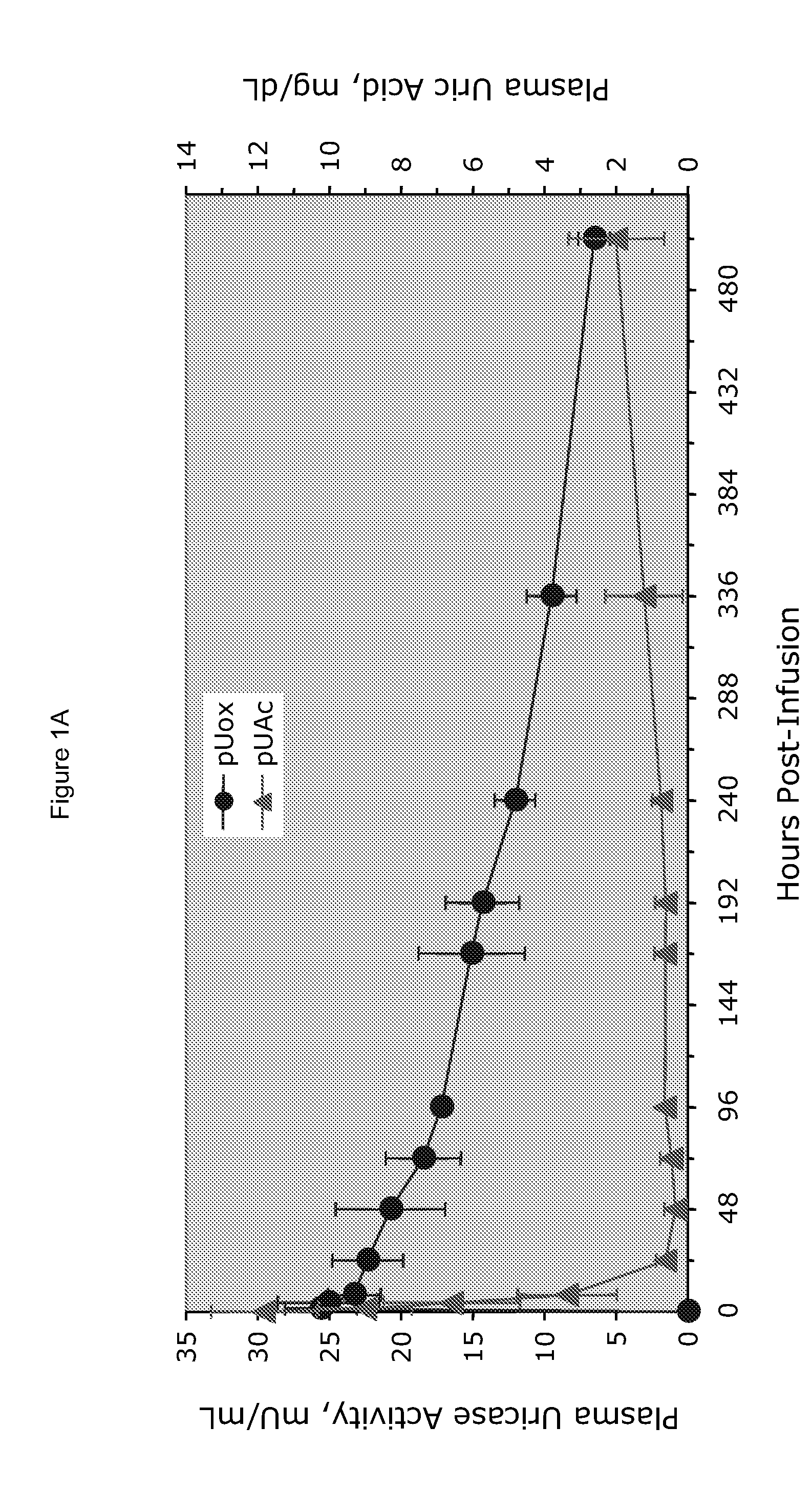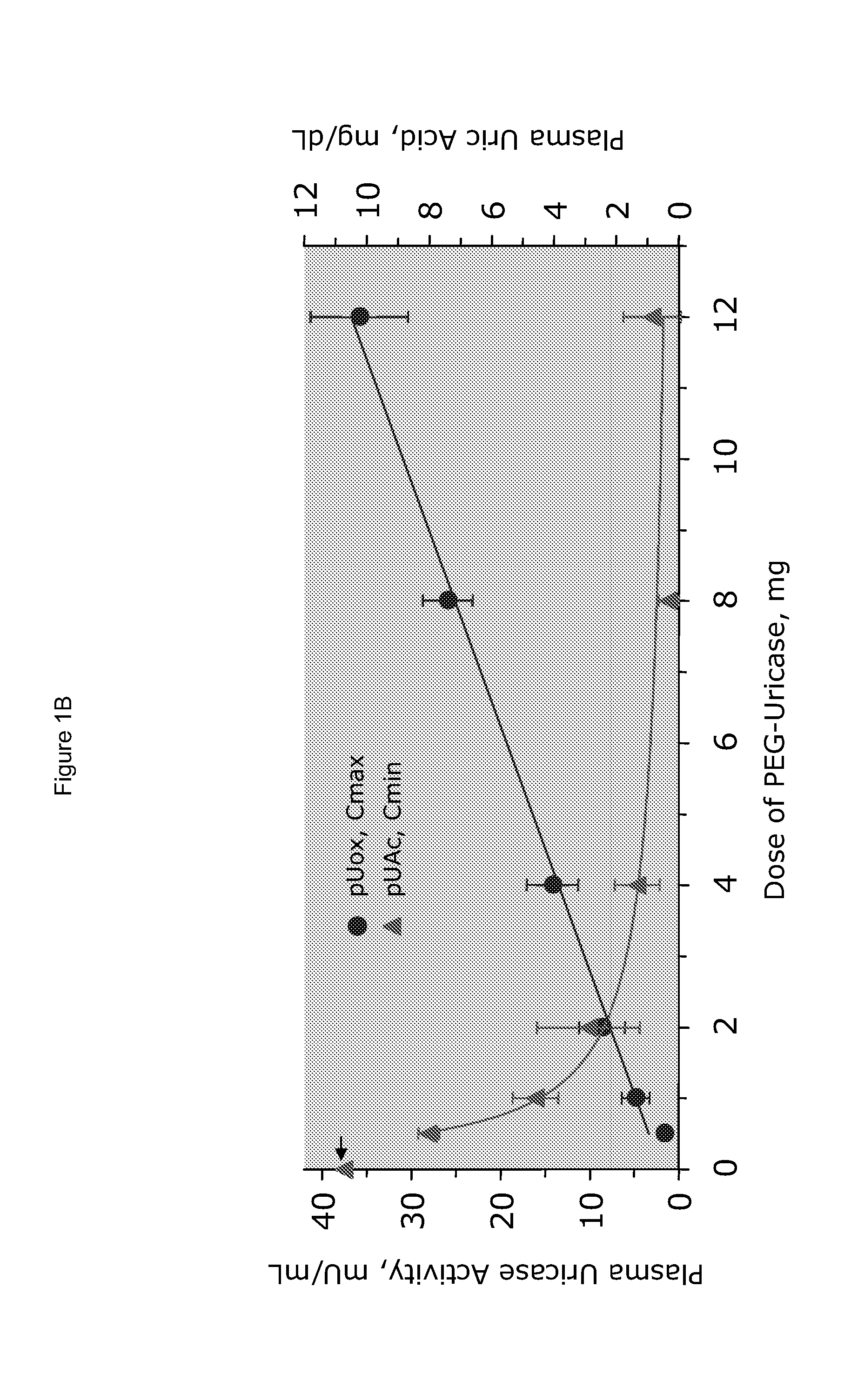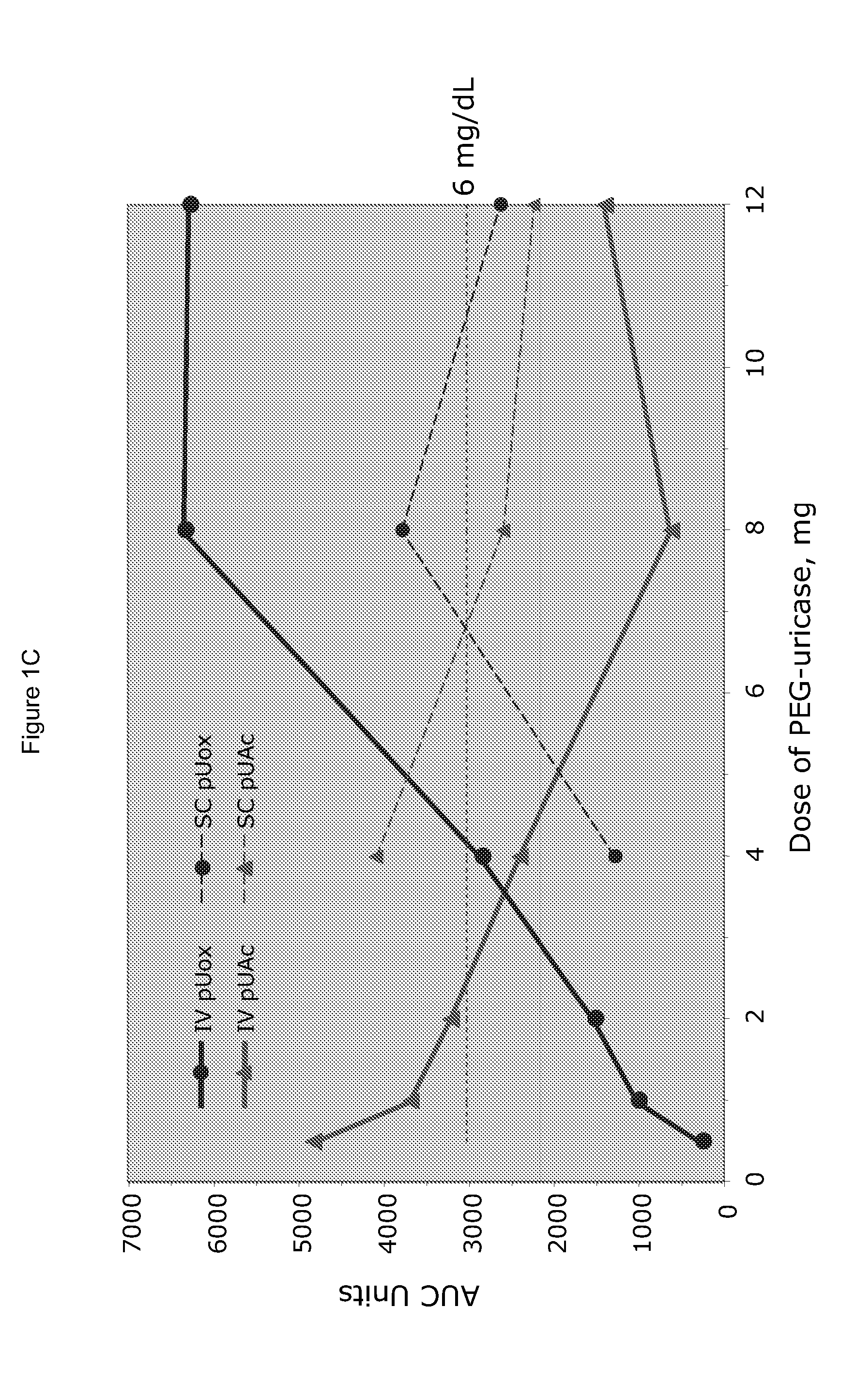Methods for lowering elevated uric acid levels using intravenous injections of PEG-uricase
a technology of uric acid and peguricase, which is applied in the direction of peptide/protein ingredients, drug compositions, enzymology, etc., can solve the problems of limited application, nephropathy, and less effective conventional therapy, and achieve the effect of reducing the risk of nephropathy
- Summary
- Abstract
- Description
- Claims
- Application Information
AI Technical Summary
Benefits of technology
Problems solved by technology
Method used
Image
Examples
example 1
Material, Methods and Design of Clinical Study
Investigational Drug
[0025]PEG-uricase consists of a recombinant mammalian uricase (primarily porcine, with C-terminal sequence from baboon uricase), conjugated with multiple strands of monomethoxyPEG of average molecular weight 10 kDa (10 K mPEG) per subunit of tetrameric enzyme (Kelly S J, et al. J Am Soc Nephrol 2001, 12:1001-1009; and Ganson N J, et al. Arthritis Res Ther 2005, 8(1):R12). It was manufactured by Savient Pharmaceuticals, Inc. (East Brunswick, N.J.) and supplied in vials containing 12.9 mg of PEG-uricase (233 Units, assayed as described below) in 1 mL of a phosphate buffer.
Phase I Study Design
[0026]An open-label study was conducted in 24 adults with symptomatic gout, who were assigned sequentially to 6 cohorts of 4 subjects each, to receive single IV infusions lasting 60 minutes and containing 0.5, 1, 2, 4, 8, or 12 mg of PEG-uricase in 50 mL of saline. The protocol and consent form were approved by the Duke University I...
example 2
Clinical Study Using Infusion of PEG-Uricase
[0033]A clinical study was carried out as indicated in Example 1 above. The results are indicated below
[0034]The demographic and gout disease characteristics of study subjects are shown in Table 1 below. Common co-morbidities associated with gout, including obesity, hypertension, coronary artery disease, and renal stones, were distributed relatively evenly among the 6 dosing cohorts, although 3 of 4 subjects in the 4 mg cohort had type II diabetes mellitus. Mean age ranged from 41.8 y in the 2 mg, to 64.5 y in the 12 mg dose cohort. Mean body mass index ranged from 28.3 in the 2 mg, to 36.5 in the 8 mg dose cohorts.
[0035]
TABLE 1Characteristics of Phase I Trial SubjectsGenderFemale 4, male 20Age (y)56.7 ± 12.9 (28-73)Number ofacute gout attacks, 22 (92%); chronic synovitis, 15subjects with:(62.5%); tophi, 18 (75%); nephrolithiasis, 5 (21%)Body Mass Index32.2 ± 6.6 (23.4-49.2)Serum Uric Acid*On allopurinol (7 subjects)...
PUM
| Property | Measurement | Unit |
|---|---|---|
| solubility | aaaaa | aaaaa |
| concentration | aaaaa | aaaaa |
| concentration | aaaaa | aaaaa |
Abstract
Description
Claims
Application Information
 Login to View More
Login to View More - R&D
- Intellectual Property
- Life Sciences
- Materials
- Tech Scout
- Unparalleled Data Quality
- Higher Quality Content
- 60% Fewer Hallucinations
Browse by: Latest US Patents, China's latest patents, Technical Efficacy Thesaurus, Application Domain, Technology Topic, Popular Technical Reports.
© 2025 PatSnap. All rights reserved.Legal|Privacy policy|Modern Slavery Act Transparency Statement|Sitemap|About US| Contact US: help@patsnap.com



